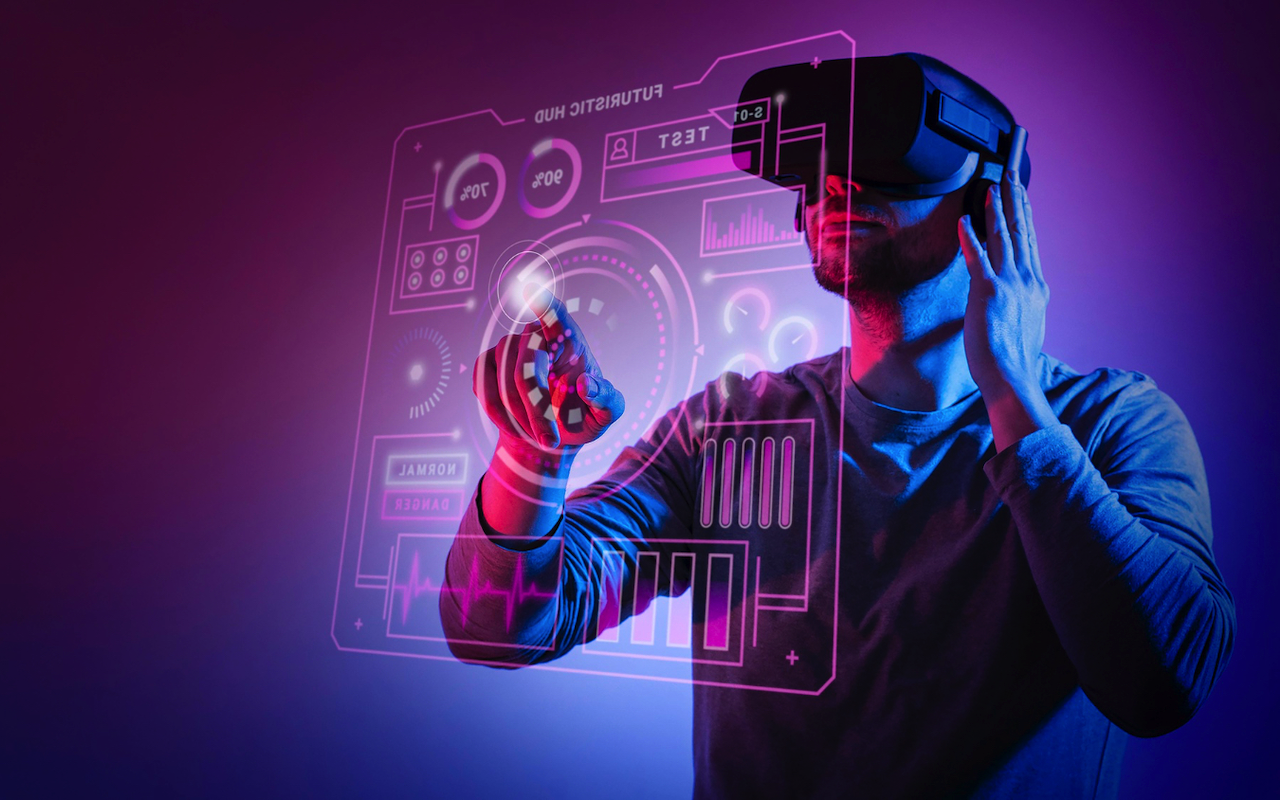
Imagine you're soaring through the sky, fighting dragons, and exploring ancient ruins from your living room. Confused about what makes it all possible? Let's explore the sometimes confusing world of VR, AR, XR, and MR! This article will clear up the differences. We'll check out the technology, applications, and future of each. Get ready to understand these reality technologies.
What is Virtual Reality (VR)?
Virtual Reality drops you into a completely computer-made world. Forget what's around you. VR is all about that immersion.
Defining Virtual Reality
Virtual Reality uses headsets to create realistic images and sounds. VR makes you feel like you're actually there. You can even interact with the fake world. It's a total escape.
Examples of VR Applications
Gaming is huge in VR. Think Beat Saber, where you slice blocks with lightsabers. You could get spooked with Resident Evil 7. VR also helps train people. Pilots use flight simulators to learn. Doctors practice surgeries in a safe, virtual space. You can even travel the world without leaving home. Virtual tourism is amazing! Big industries that use VR include healthcare and the military.
Benefits and Limitations of VR
VR is awesome for immersive experiences. It's great for training because it's safe and repeatable. Entertainment is also way better with VR. But, VR headsets can be pricey. Some people get motion sickness. Also, spending too much time in VR can feel isolating.

What is Augmented Reality (AR)?
AR doesn't replace the real world. It adds to it. AR puts digital content on top of what you already see.
Defining Augmented Reality
With AR, a computer-made image appears in your view of reality. It's a mix of what's real and what's digital. You don't need a headset for most AR experiences.
Examples of AR Applications
Pokémon Go is a classic AR example. Digital Pokémon pop up in your neighborhood. Snapchat filters add funny faces and effects. IKEA Place lets you see what furniture looks like in your house. AR navigation tools show directions on your phone's camera view.
Benefits and Limitations of AR
AR makes things interactive. It's great for hands-on experiences. Stores can use AR for marketing to sell more stuff. Trying before buying is now possible. However, user experience problems can be a pain. There are still limited uses for this technology, for now.
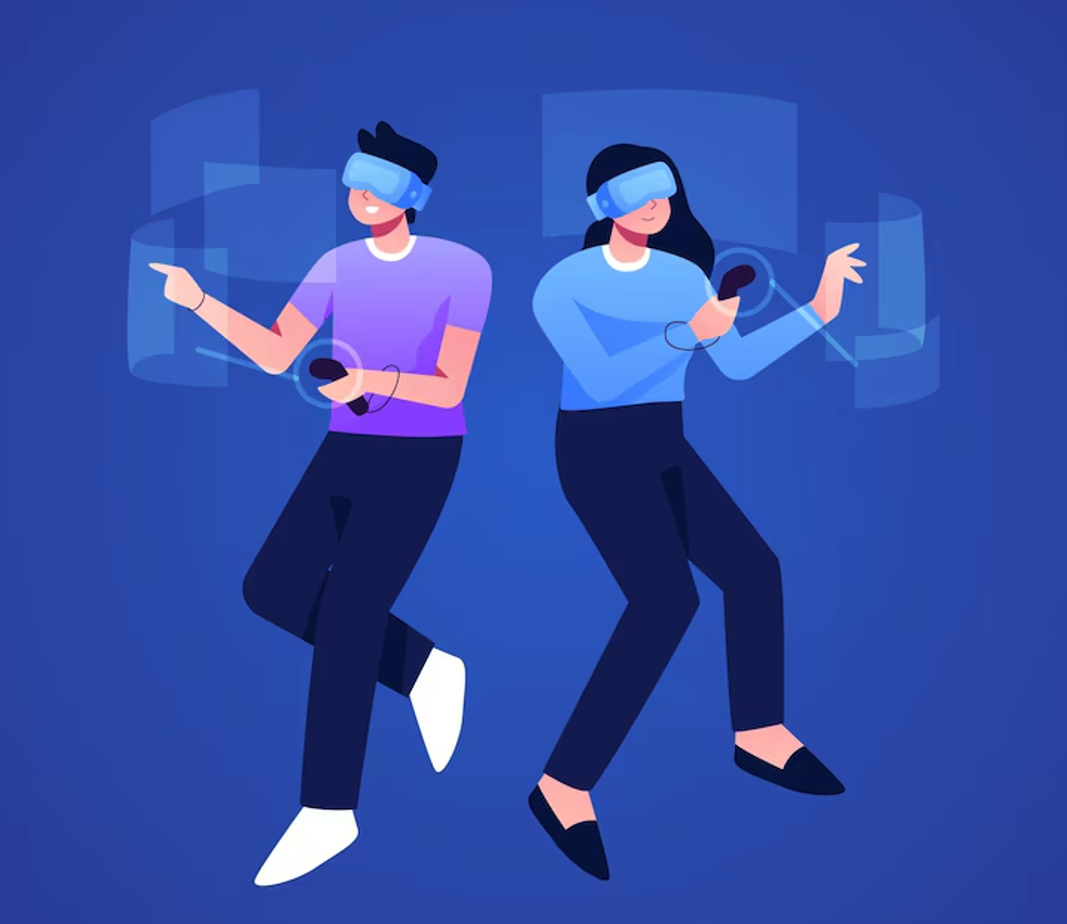
What is Extended Reality (XR)?
Extended Reality is a broad term. It covers VR, AR, MR, and all future realities. Think of it as an umbrella term.
Defining Extended Reality
XR includes all real and fake environments. It's about how humans and machines interact. Wearable tech and computers make it happen.
Why XR Matters
XR is a way to group all these technologies together. It's also an evolving area of technology. New advancements, like haptics, improve touch. Eye-tracking makes things more responsive. XR is more than just a buzzword.
The Future of XR
XR could change how we live and work. Imagine doctors using XR for surgery. Factory workers could fix machines with AR guides. The possibilities seem endless. XR is an evolving area, so expect more breakthroughs.
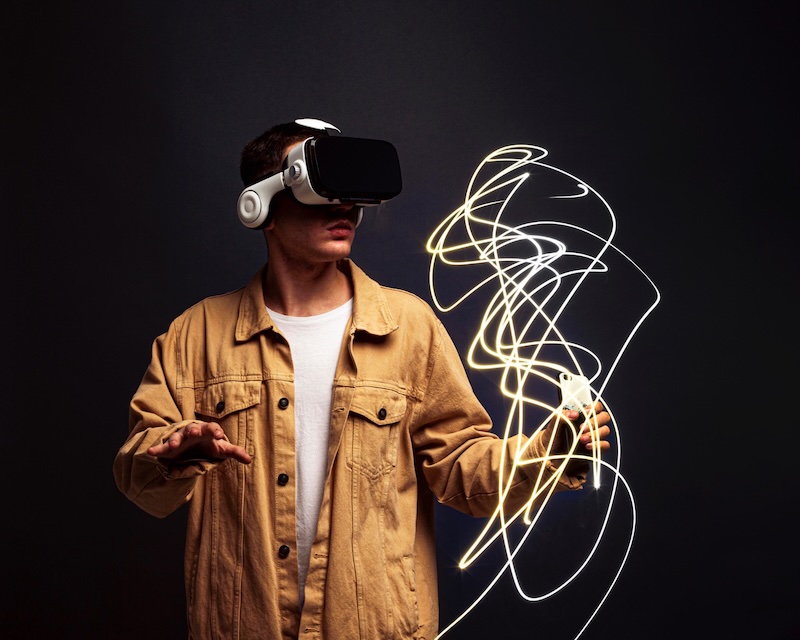
What is Mixed Reality (MR)?
MR blends VR and AR. Digital objects interact with the real world in real-time. It's the best of both worlds.
Defining Mixed Reality
Mixed Reality merges real and virtual worlds. The real and virtual things work together. You can touch and interact with digital items in your space.
Examples of MR Applications
Microsoft HoloLens is a popular MR device. Companies use it for training. Architects use MR to visualize buildings. Doctors use MR for medical training. The possibilities are enormous.
Benefits and Limitations of MR
MR allows people to collaborate in new ways. Remote assistance becomes easier. However, MR tech is complex and hard to set up. There is also not a lot of ready-made MR content.
Key Differences: VR vs. AR vs. XR vs. MR
Let's break down what makes each technology unique.
Immersion Level
VR is fully immersive. You are in another world. AR adds to your current view. MR mixes real and virtual. XR covers them all.
Technology and Hardware
VR needs headsets. AR often uses smartphones. MR uses special devices like HoloLens. XR is a general category.
Use Cases and Applications
VR is great for gaming and training. AR helps with navigation and shopping. MR is useful for complex tasks and collaboration. XR covers all use cases.
The Future of Reality Technologies
These technologies are changing fast. They could change the way we live.
Convergence and Innovation
VR, AR, XR, and MR might blend together. The metaverse could be where we work, play, and socialize. New tech will blur the lines between physical and digital.
Ethical Considerations
Privacy is a big concern. These technologies collect a lot of data. There's a risk of addiction. Too much screen time is not good. Social interaction might change for the worse.
Actionable Tips for Getting Started
Want to try these technologies? Start with a VR headset like Oculus. Explore AR apps on your phone. Watch videos and read articles to learn more. Plenty of online resources exist.
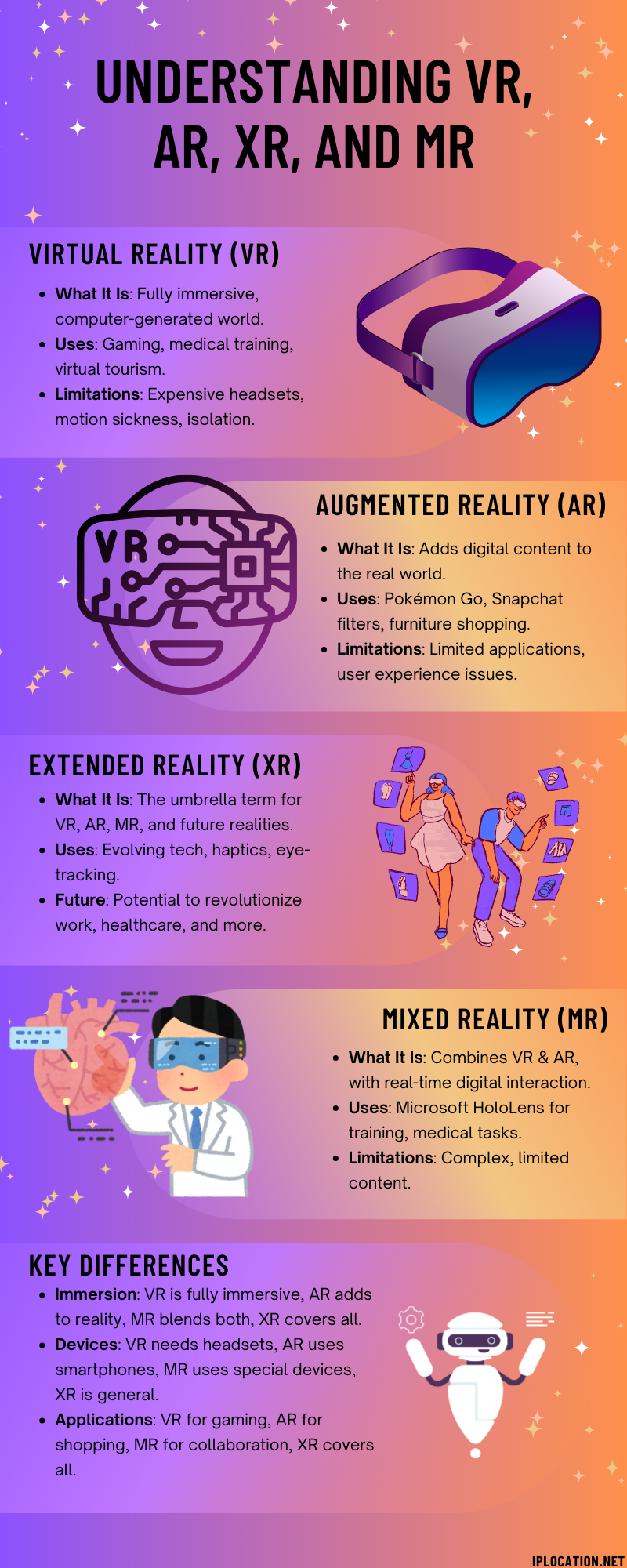
Conclusion
VR creates a new world. AR adds to the real one. XR is the umbrella term. MR blends realities. These technologies will change how we live, work, and play. Which reality interests you the most? Share your thoughts in the comments.
Images by Freepik.
Share this post
Leave a comment
All comments are moderated. Spammy and bot submitted comments are deleted. Please submit the comments that are helpful to others, and we'll approve your comments. A comment that includes outbound link will only be approved if the content is relevant to the topic, and has some value to our readers.


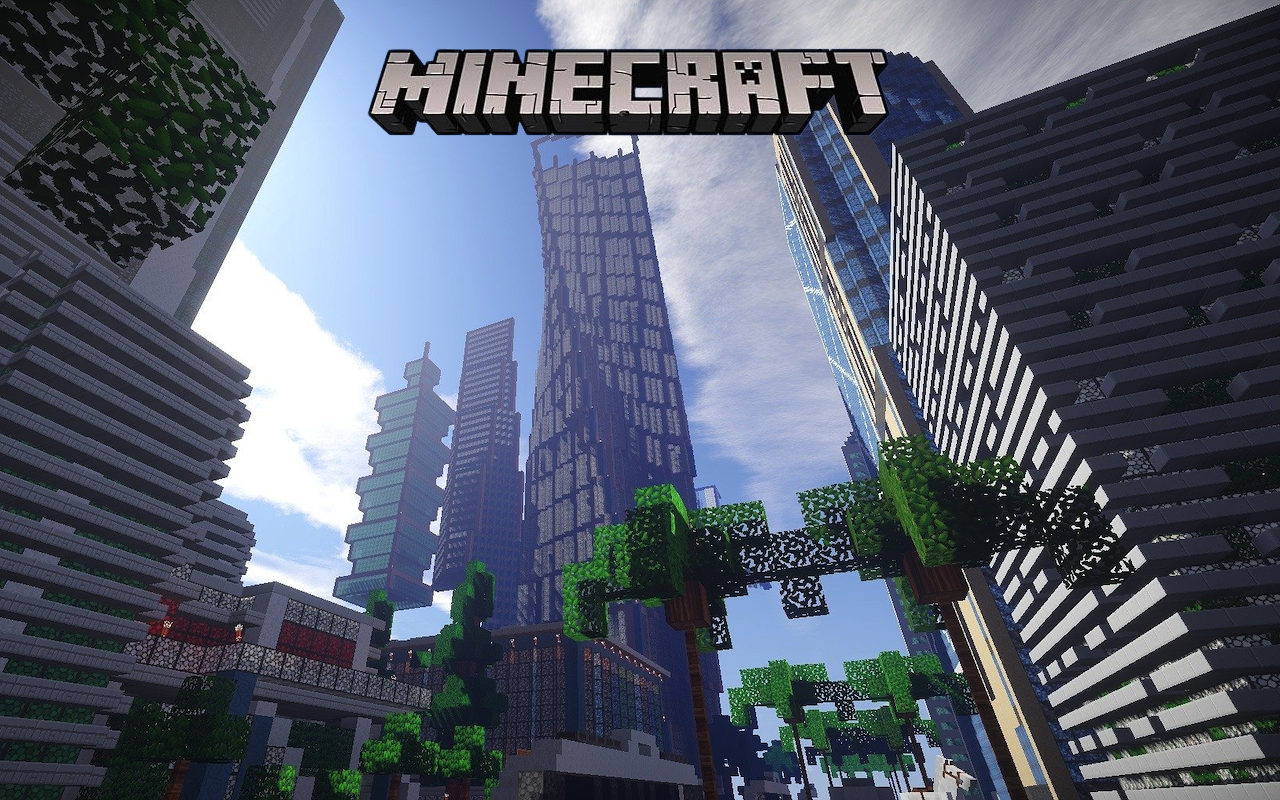
Comments (0)
No comment